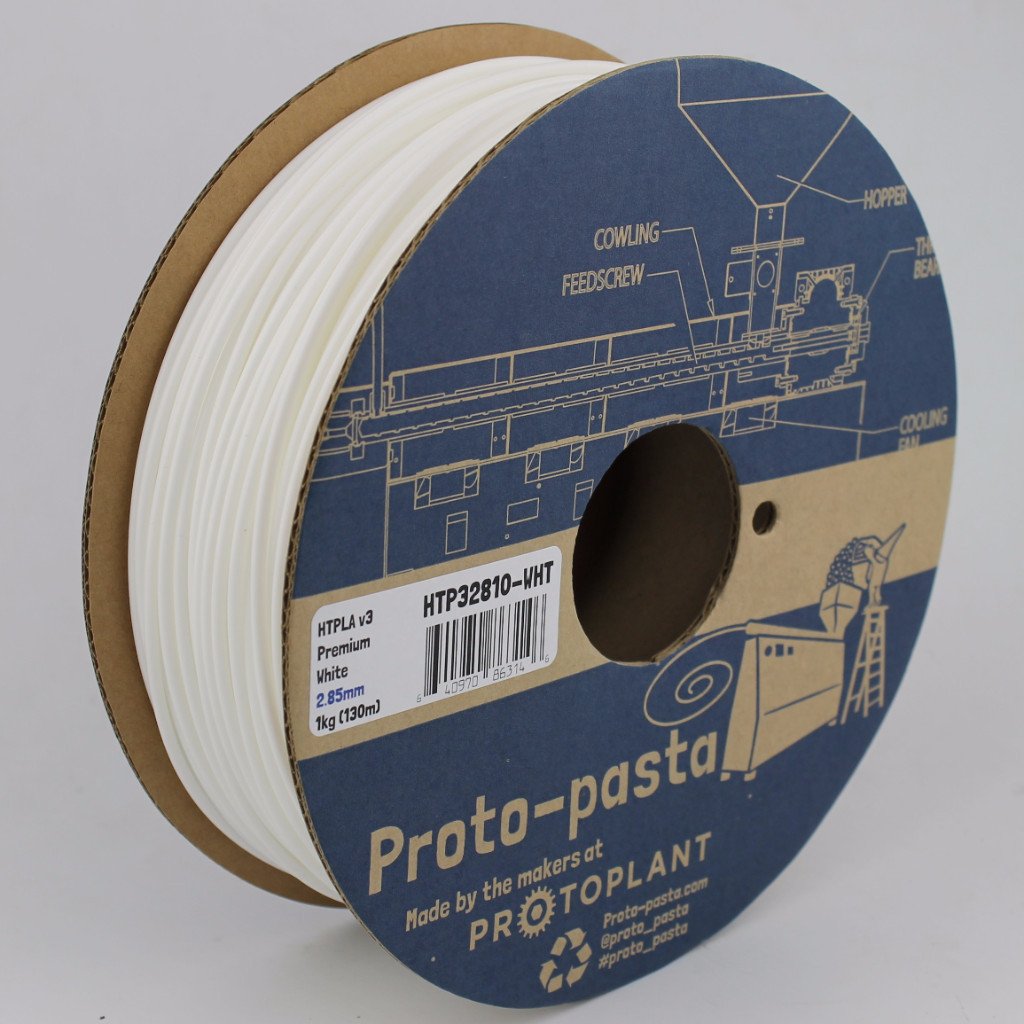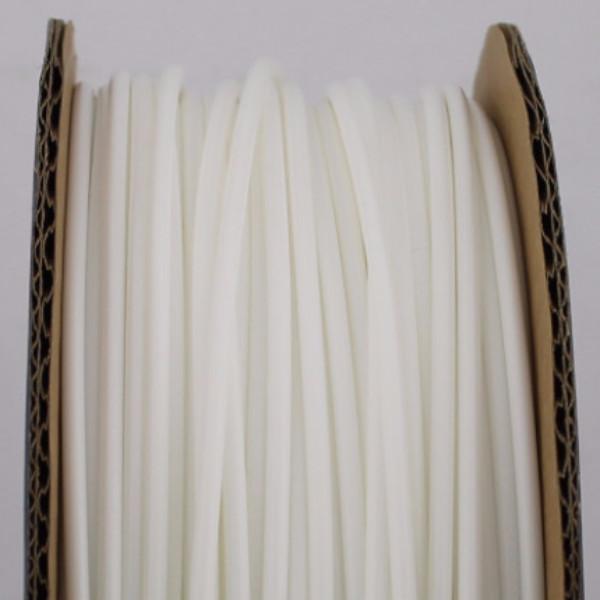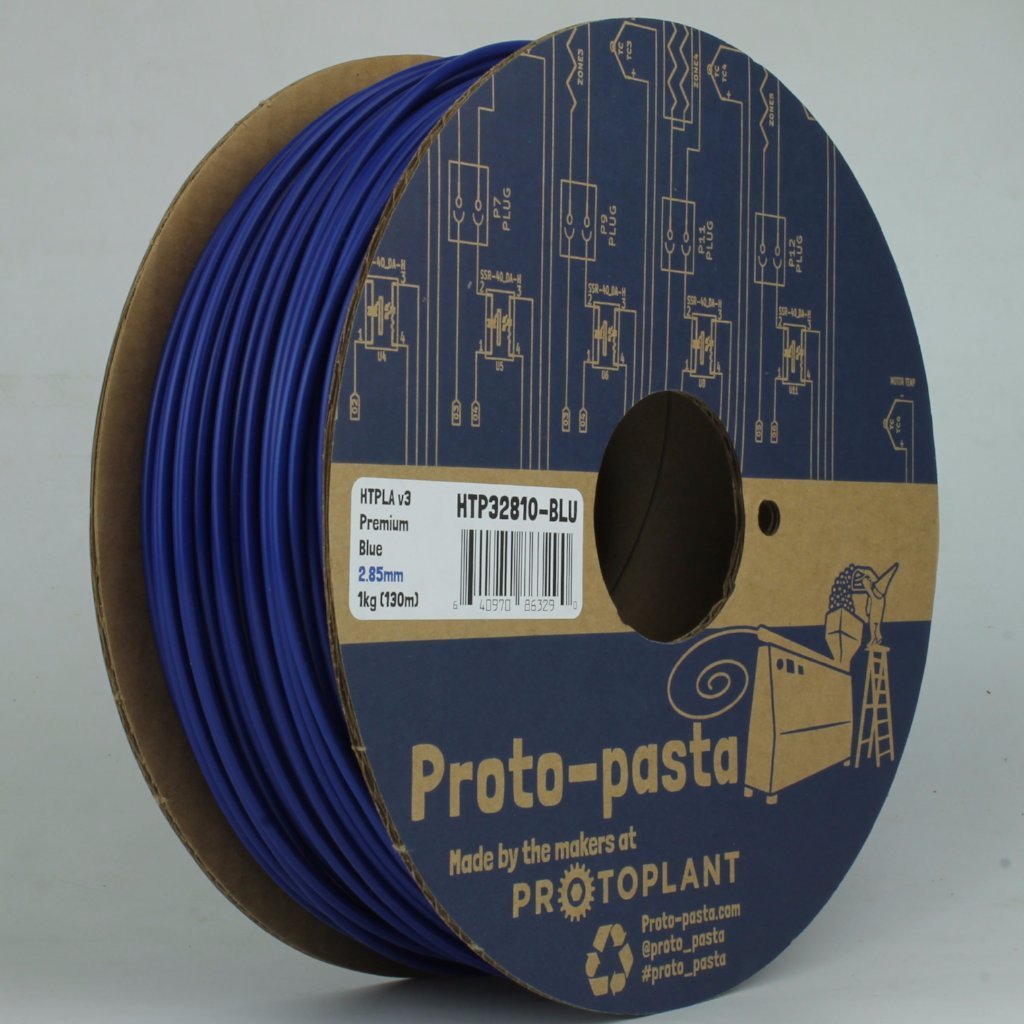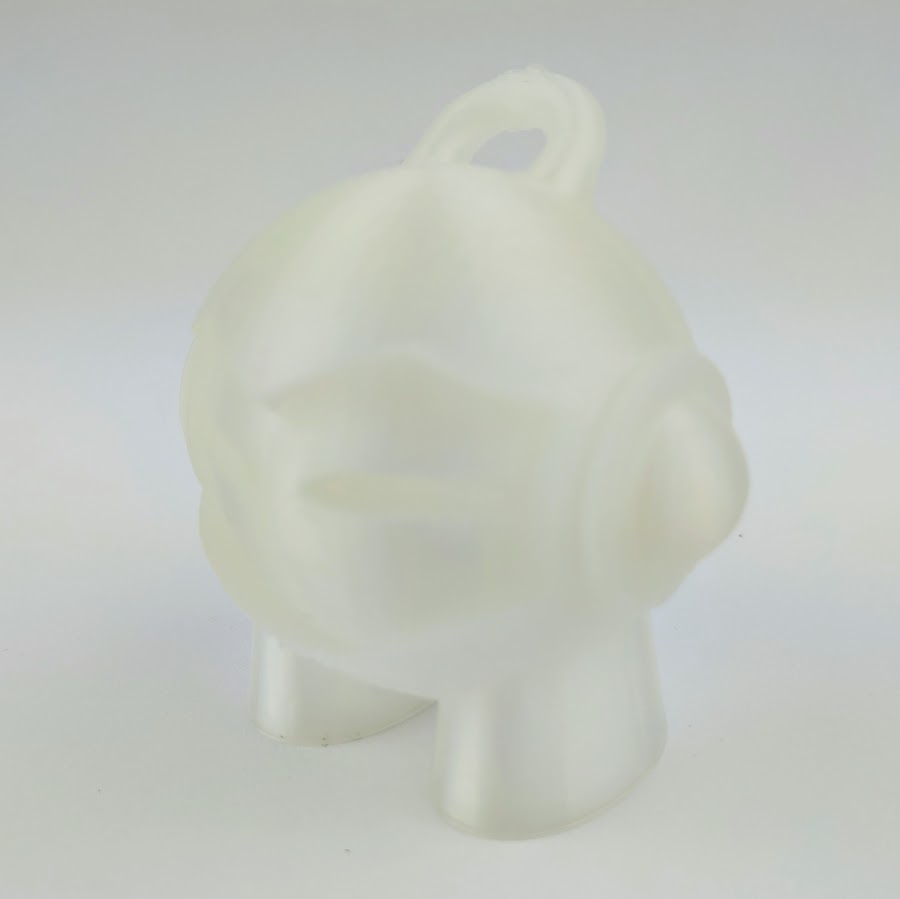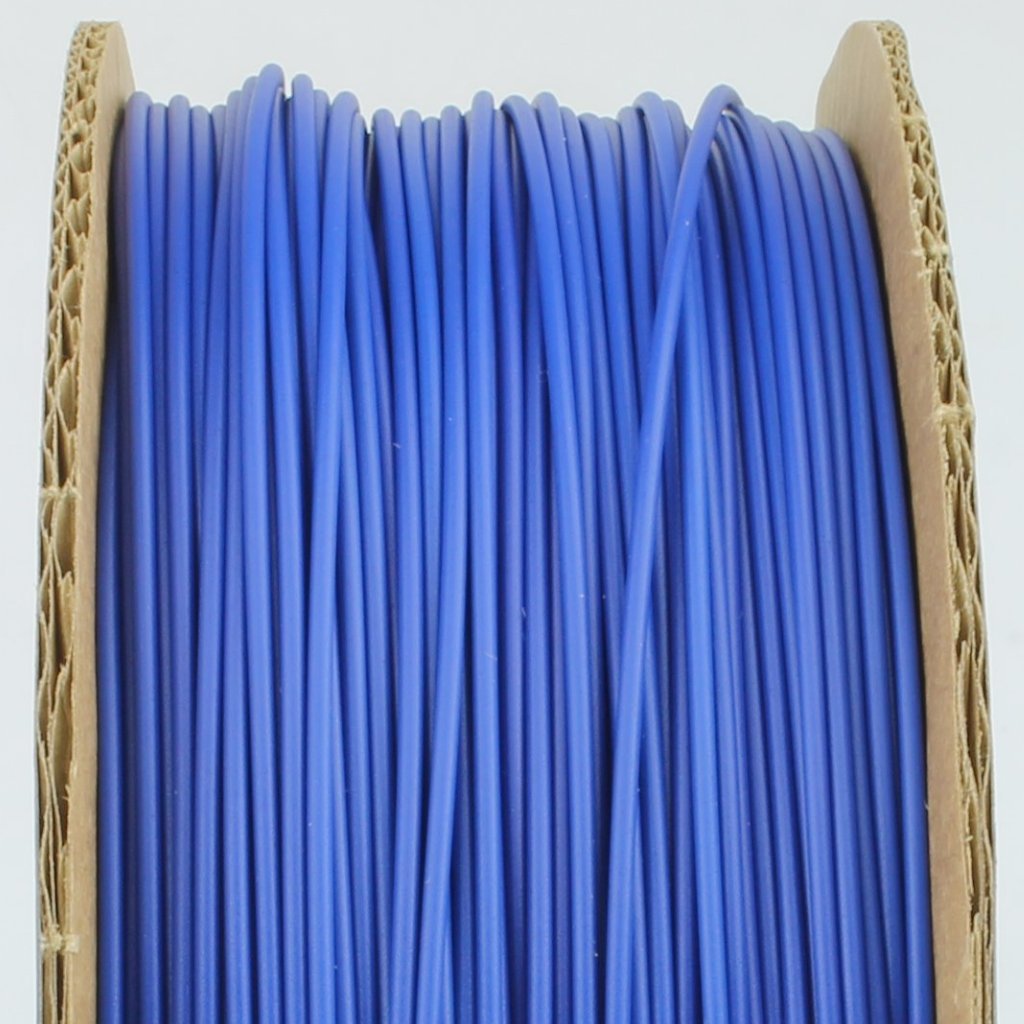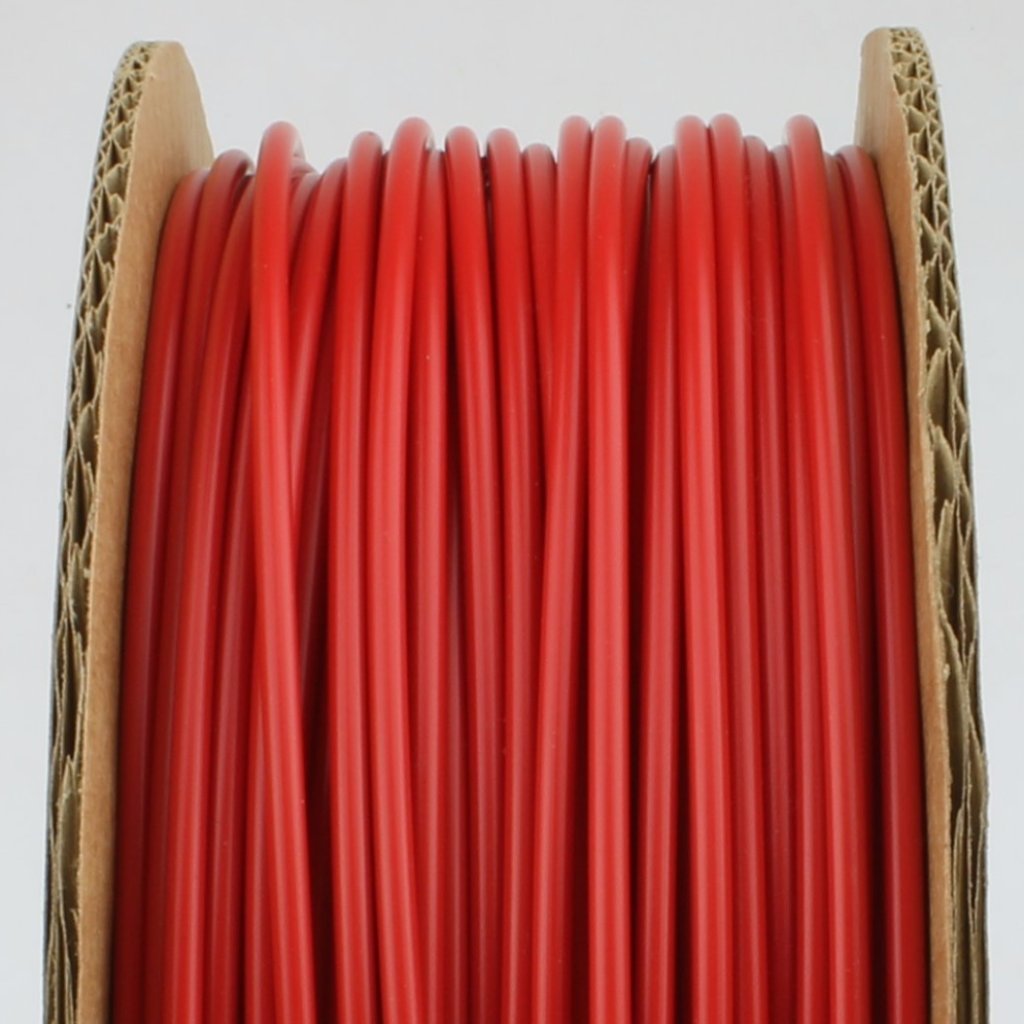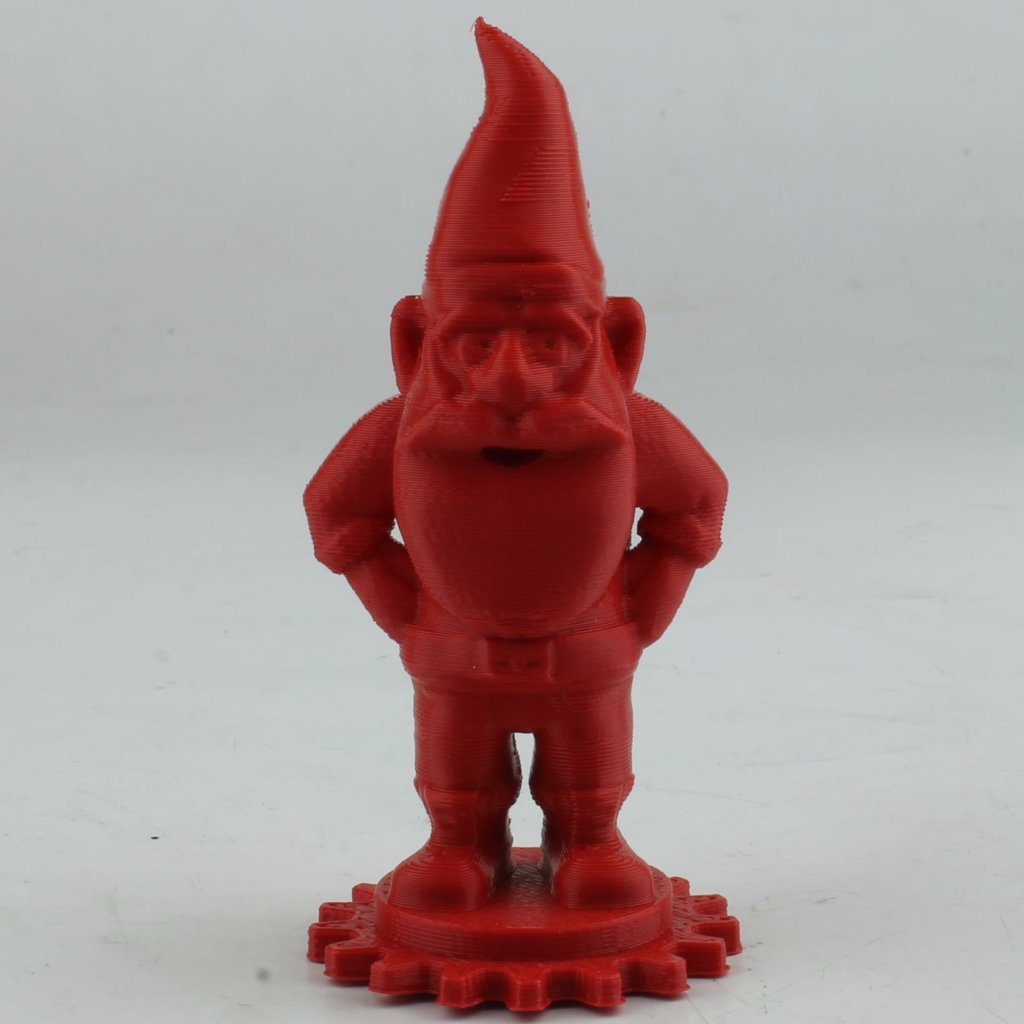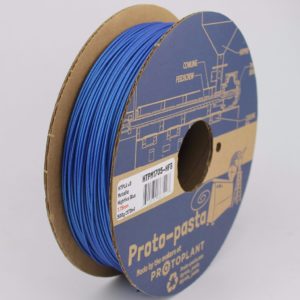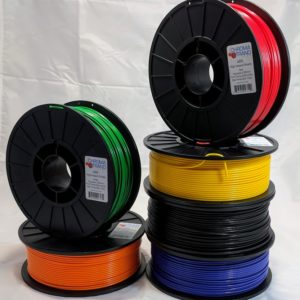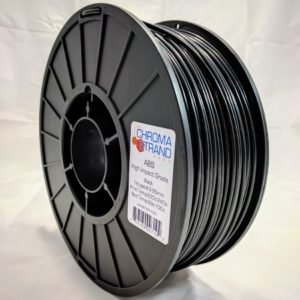Description
Proto-pasta’s Premium HTPLA v3 is our their exclusive, unique formulation based on extensive in-house testing and industry-leading experience working with heat treatable PLA. HTPLA v3 prints like standard PLA, but can be heat treated for much higher temperature stability than standard PLA. HTPLA v3 offers exceptional performance and finish for your functional prototypes and final part production.
Here is why HTPLA v3 is so special:
- Leading Performance – Proto Pasta created and tested many blends (including those from large, respected material manufactures) before selecting this formula for more durability without sacrificing HTPLA’s exceptional stiffness, strength, and layer adhesion. Bonus 1: More consistent flow with less tendency towards clogging compared to Everyday PLA. Bonus 2: Less moisture uptake compared to HTPLA v2 allowing higher temperature printing (up to 250C or more) for further improved layer adhesion and part strength! Bonus 3: HTPLA v3 even outperforms HTPLA-CF based on HTPLA v2 by exhibiting as little as 0.5% shrinkage in x/y and negligible change in z during heat treating of 100% infill parts.
- Exceptional Quality – Less lost time and material with less failed prints. Poor diameter, wet, and brittle filament can reduce reliability. That’s why they implement dynamic diameter feedback, introduce no moisture during extrusion, and improved durability for HTPLA v3.
- Competitive Cost – They’re next leveling the business with more space, more extruders, and more productivity to reach a new economy of scale and sharing that advancement with you by bringing you more product for less.
- Less waste – HTPLA, like standard PLA, has a more eco-friendly, bio-renewable origin with less out-gassing and nano-particle emissions than most plastics, but then many companies spool PLA onto petroleum based, non-recyclable reels creating unnecessary plastic waste! Next, they add additional wasteful packaging like multiple boxes. Finally, they often out-source materials from far away at additional cost to the environment. We’re controlling our carbon footprint and minimizing environmental impact by sourcing local materials, adding nothing unnecessary, and minimizing packaging waste. We lead the industry with locally-made, 100% recyclable cardboard spools that are both lightweight to ship and locally recyclable.
- Made by Makers – Best of all, Proto-pasta is made by engineering professionals at Protoplant who are passionate about making things and improving our world – just like you! When you purchase Proto-pasta, you can feel good about supporting small business, future innovation, the environment, and hard working folks that love 3D Printing, technology, and tinkering as much as you do!
Printing: HTPLA like PLA at can print at 200C or less, though exceptional mechanical results were achieved printing up to 250C or more for nearly twice the layer strength compared to 230C in our tests. Adjust layer fan and build rate for surface quality. Though a heated bed is not required, larger, more solid parts can benefit from bed temps up to 70C. Standard build surface preparation like blue tape or glue stick work best along with slow (10-20 mm/s) and hot (220C+) 1st layer with enough gap not to restrict material extrusion.
Heat treating: PLA and HTPLA as printed, though both adequate performers in an office environment, have poor temperature stability, loosing significant stiffness at temperatures not much above 50C. Different than standard PLA, HTPLA is designed to survive heat treating for higher temperature stability in a no/minimal load condition to near melting. That’s an astonishing 3x+ improvement in thermal stability compared to standard PLA after a quick bake in the oven after printing. In as little as 5-10 minutes for small, thin parts and as much a few hours for massive parts, HTPLA v3 parts crystallize in an oven at 110C +/- 10C (200-250F) to become more stiff. Depending on part geometry, setup, and technique, parts can deform and shrink. Best results are with flat and/or supported parts with 100% infill. In this instance we experienced x/y shrinkage of only 0.5% and negligible z change. Be sure to avoid hot spots (non-radiating surfaces and no glowing coils) in the oven used for baking and experiment before baking a prized part. Heat treating is an art, but the resulting improved thermal performance, if needed, is well-worth experimenting to learn more. You’ll be blown away by just how improved the thermal stability of your HTPLA v3 parts will be!
